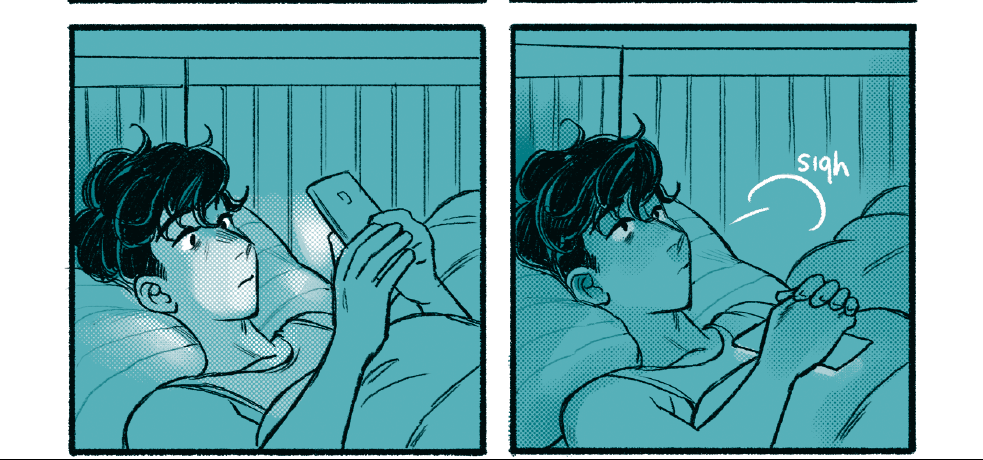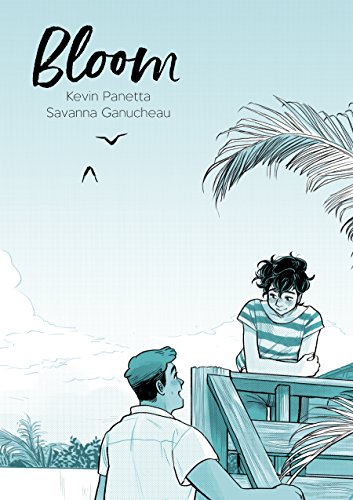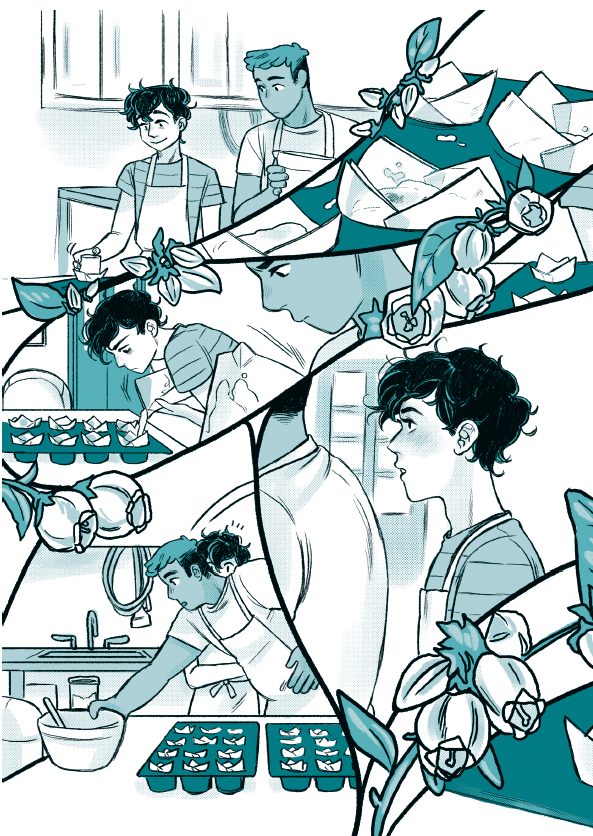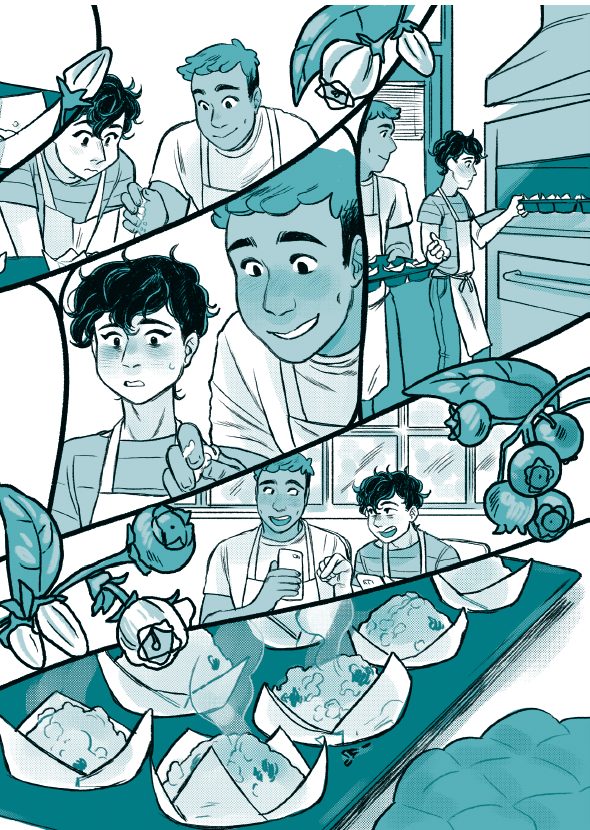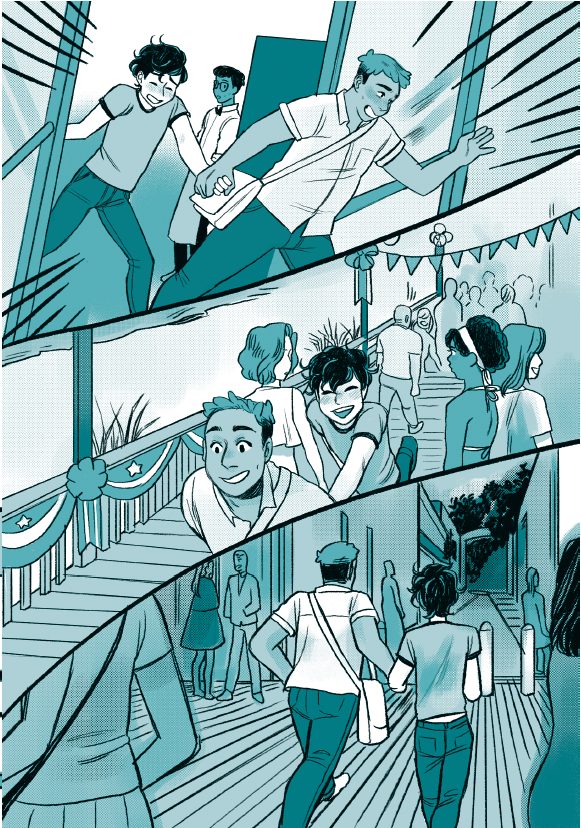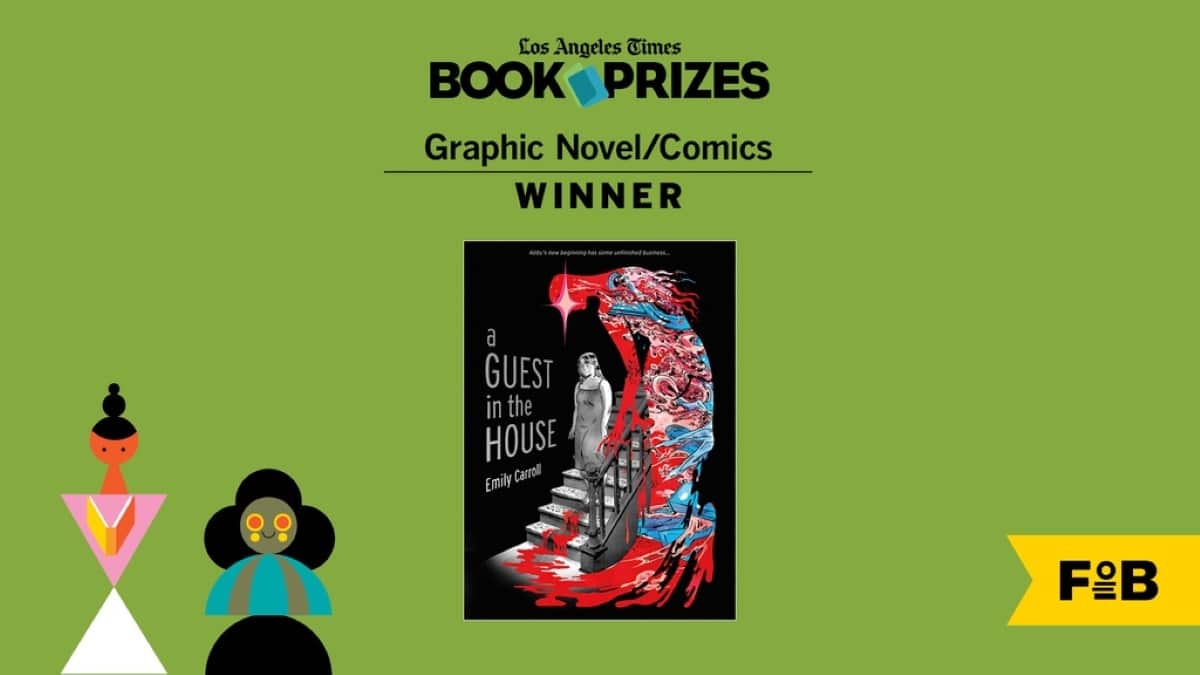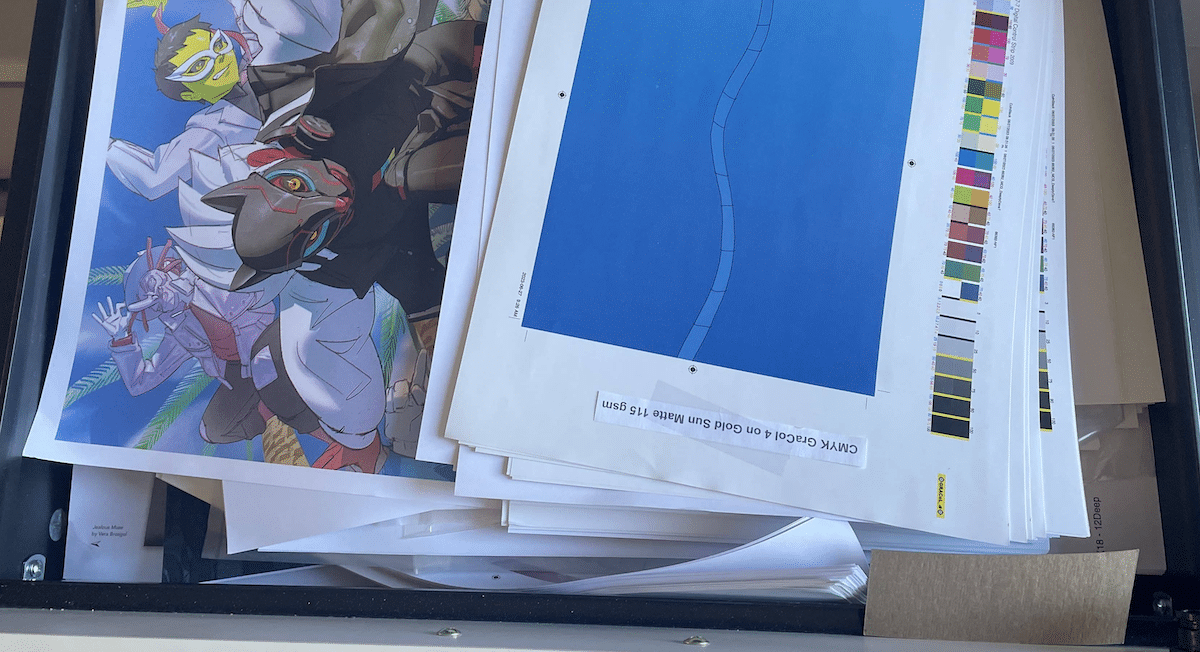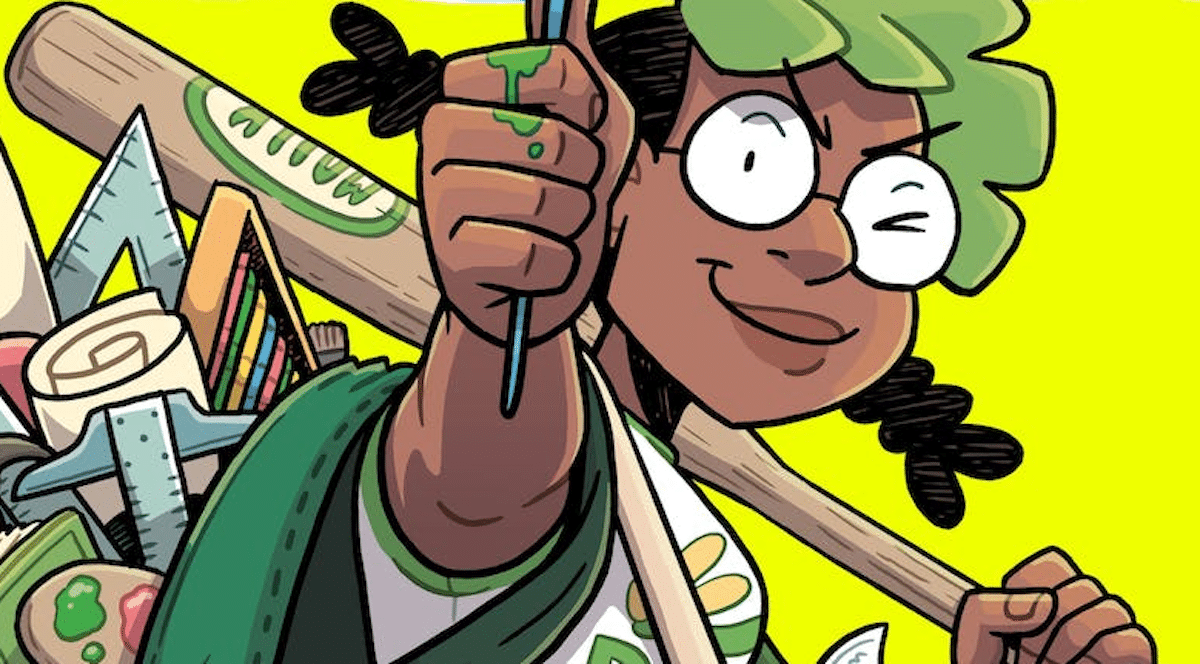 Bloom
Bloom
Writer: Kevin Panetta
Artist: Savanna Ganucheau
Publisher: First Second
There should maybe be a specific word to describe the time in life between high school and adulthood. It is, of course, a time churning with uncertainty over everything from one’s future to one’s education to one’s family to friendships and romance. It was for me a time when it felt like everything and nothing was at stake, like I had little control over the world yet the decisions I made could potentially influence my entire life. I was torn between the old and new, listless and dissatisfied, waiting for something to come find me.
Ennui, which I’ve used in this headline, isn’t quite right. No, ennui is too grounded of a word, too reserved, maybe just a little too adult. Those late teen years are hormonal, charged and unpredictable and profound. Too messy for ennui. No, I don’t think there is a singular extant word to apply. Bloom, the new original graphic novel from publisher First Second, however, strives as a story to convey it all, to capture the pivotal and unique pain we all feel.
And it succeeds, gorgeously. Written by Kevin Panetta with artwork by Savanna Ganucheau, Bloom is a coming of age tale that aspires to and obtains a rare emotional reality. Bloom is the story of Ari, not quite an adult but no longer a child, toiling away in his parents’ bakery for one last summer before moving “to the city,” a plan exactly as vague and ill-conceived as it sounds. His older sister has married and gone, leaving him hamstrung by a guilty sense of obligation. Ari is in a band—this is what he plans to do with his life—and other than that, his main pursuit is to find his own replacement, a search that brings him to Bloom’s other central character, Hector. Ari and Hector then fall in love while working at the bakery. Mistakes are made, things get complicated, there is growth. That’s essentially it. It’s a slice of life story that succeeds by feeling both urgent and immersive.
Bloom checks all my structural boxes for this type of book. Do we know who are lead character is from page one? Yes. Do we know what he desires soon after? We sure do. Does the plot eventually complicate those desires in ways he must take personal responsibility for…in other words, do some of his desires (wanting to do what’s right for his family) put him in conflict with others (wanting to make a big move for himself)? You bet. With those basics so well-constructed, it’s easy to then get lost in depth of character, relationships, and the idiosyncrasies of behaviors. And it’s not just Ari. Other characters are often given clear desires and conflicts as well. Hector being awed by Ari’s old married couple parents making filo in perfect synch is especially touching.
All throughout, Ganucheau’s artwork serves the immersive feeling by wielding small details, nailing small scenes. Something as minor as a panel of a character hitting the spacebar to restart Gilmore Girls on a laptop after a tough late night chat is wonderful. There is an especially visual scene in the first half of the book that gave me chills of familiarity: Ari, covered in blues, is unable to sleep. He sends forlorn texts to his friends and is met with silence, before reaching out to Hector and getting a goosebump-inducing response. It was simple and innocent and, I believe, something most (if not all) readers can absolutely relate to in 2019.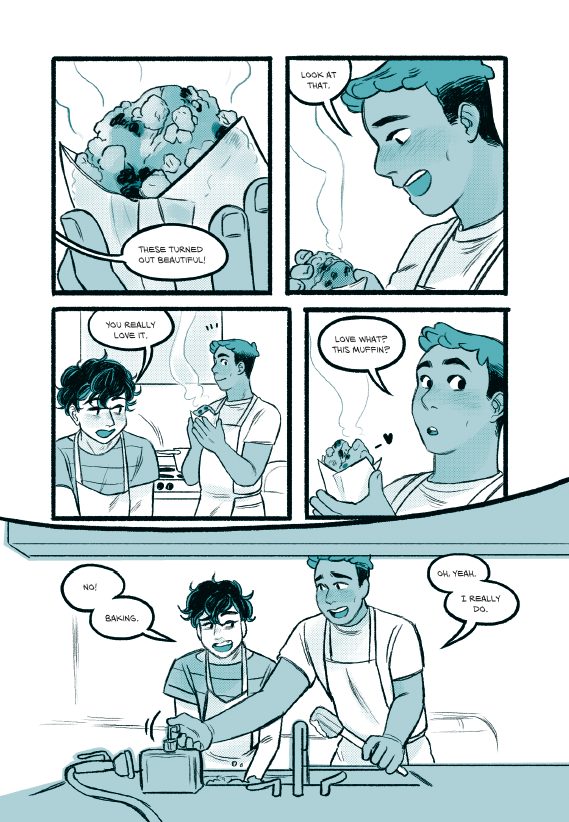
The panel borders in Bloom are also used often to set tone, which is something I as a reader go weak for. At moments of great fun and levity and just like, life man, the borders tilt and careen across the page, landing fecklessly where they will. When the intensity of a personal connection is ratcheted further, simple borders turn into tulips and stems and vines and tender roses in bloom. It’s a neat visual effect that does real and important heavy lifting in the story, cluing us in as directly as any dialogue on how our characters feel in crucial moments.
The storytellers choice to have Ari and Hector baking is wise as well. Baking—with its vastly procedural nature—often gives characters much to do as they swap realistic small talk. Baking is also procedural in a way that can be (and is) used to reveal traits. This is part of why shows like The Great British Bake-Off are so enthralling (but I digress). Bloom uses baking to facilitate pacing, too. There is work to be done in that bakery, and there are plenty of sequences wherein we see Ari and Hector do it, putting us right there with them as it occurs.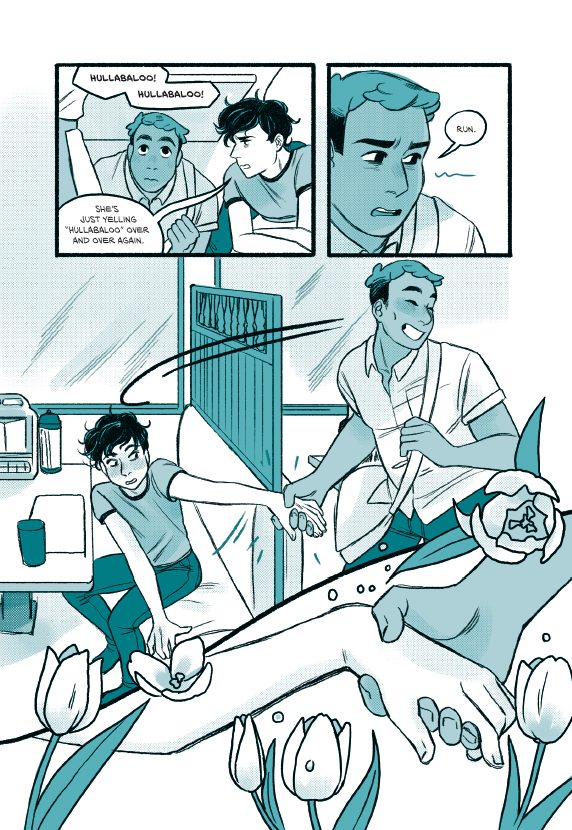
My lone criticism of Bloom is light and nit picky. Criticism is maybe a strong word. It’s more of a curiosity and at one point a character on the page even makes light of it–but, yes, the musical references do feel dated. The story is set in 2015, but Ari and others are listening to Air, Passion Pit, Spoon, which is just fine. I’m certainly a big fan of those bands, but I’m (sigh) no longer all that close to being a teen and I wasn’t in 2015, either. I don’t really know what “the kids” were listening to a few years ago, but I’d be shocked (in a good way!) if it was the same music as me. That whole contemplation took me out of the story.
Overall, for me the central question of Bloom is one asked about halfway through, “Why do you want to be somewhere else?” So many of us these days—especially those involved with the arts—come from a place where to move is the goal, even if we haven’t done any personal inventory as to why. We’ve just become so lost in the idea of someplace else. A desire to leave has rooted deep within us. This is true of some characters in Bloom. But not all. For Hector, a content life means doing work he enjoys and keeping busy, escaping in stolen moments with old friends or re-watches of favorite TV shows. For Ari, the same sort of escape means living in a bigger city, playing in a hip band. It creates a compelling tension and contrast when those two characters fall in love, one that ultimately lands with a resounding reward for readers once growth occurs and emotional honesty starts flowing.


